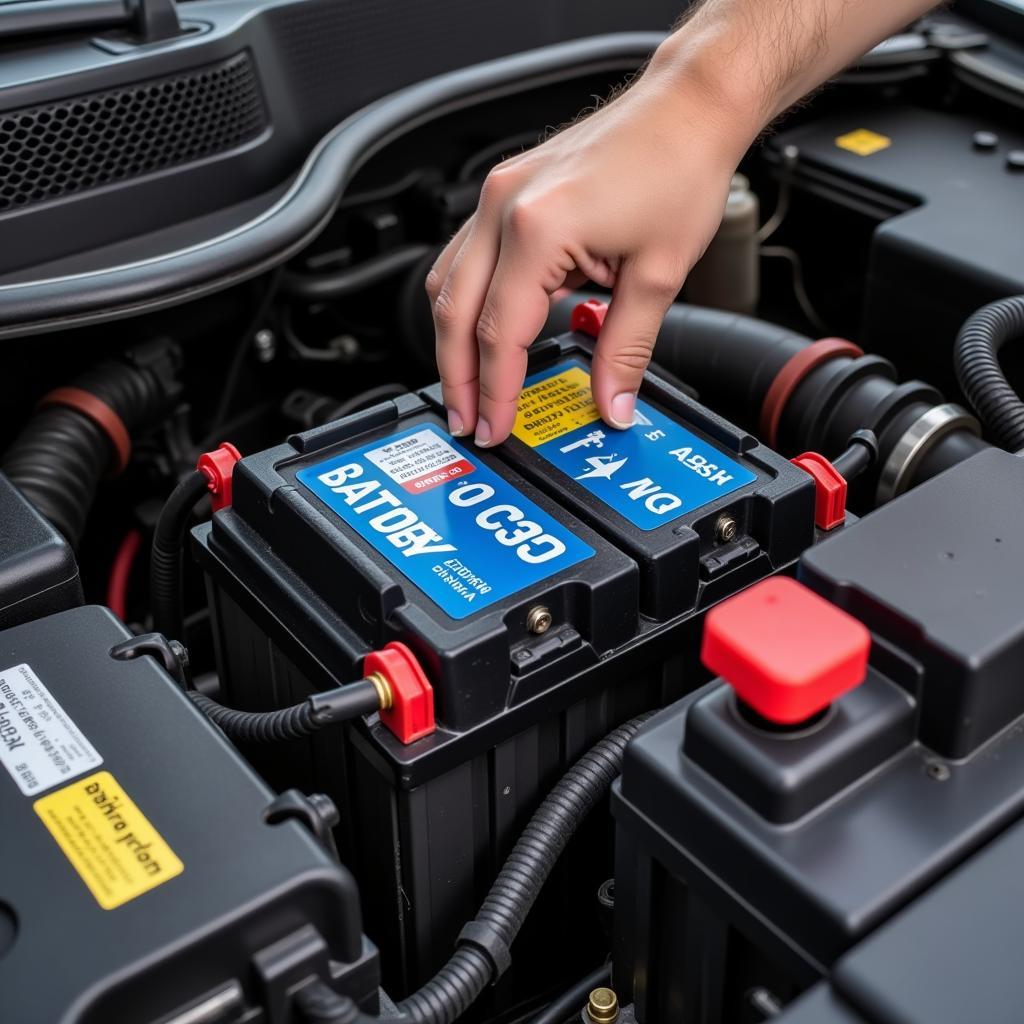Car battery low not starting is a frustratingly common problem. Whether you’re rushing to work or heading out for a weekend trip, a dead battery can quickly derail your plans. This guide provides a comprehensive overview of why your car battery might be low and preventing your car from starting, offering practical solutions and expert advice to get you back on the road.
Why is My Car Battery Low and Not Starting?
Several factors can contribute to a low car battery and starting problems. These range from simple issues like leaving your lights on to more complex problems with the car’s charging system. Identifying the root cause is crucial for implementing the correct solution. One common reason is simply age. Car batteries have a limited lifespan, typically lasting between three and five years. Over time, the battery’s ability to hold a charge diminishes, eventually leading to a “car battery low not starting” situation.
Another common culprit is parasitic drain. This occurs when an electrical component continues to draw power even after the car is turned off. Things like interior lights, faulty door switches, or even aftermarket accessories can slowly drain your battery overnight, leaving you with a car that won’t start in the morning. Cold weather can also exacerbate battery problems. Low temperatures reduce a battery’s capacity, making it harder to crank the engine. This is especially true for older batteries that are already nearing the end of their life.
A malfunctioning alternator can also lead to a low battery. The alternator is responsible for recharging the battery while the engine is running. If the alternator isn’t working properly, the battery won’t receive the necessary charge, ultimately resulting in a dead battery and a car that won’t start. Similar to how a tiguan battery dead can be caused by various factors, understanding these potential problems is vital.
Troubleshooting a Low Car Battery
When faced with a “car battery low not starting” scenario, there are several steps you can take to diagnose the problem. First, try jump-starting the car. If the car starts with a jump, it’s a strong indication of a battery issue. If you’re dealing with a dead key fob battery, however, a jump start won’t help, as discussed in our guide on highlander key fob battery. Once the car is running, use a multimeter to test the battery voltage. A fully charged battery should read around 12.6 volts. A lower reading suggests a problem with the battery or the charging system.
Next, check the alternator. With the engine running, the multimeter should read between 13.5 and 14.5 volts. A lower reading indicates a failing alternator. Remember, a car that won’t start might not always be due to a battery issue. It could be a problem with the starter motor, fuel system, or other electrical components, similar to the scenarios outlined in our article on car will not start but battery is good.
How to Prevent a Low Car Battery
Preventing a low car battery involves regular maintenance and being mindful of your car’s electrical system. Make sure to have your battery tested regularly, especially if it’s more than three years old. If your battery is nearing the end of its life, proactively replacing it can prevent unexpected breakdowns. Also, be diligent about turning off all lights and accessories when you exit your vehicle. This can help prevent parasitic drain and ensure your battery stays charged.
“Regular battery maintenance is crucial,” says automotive expert John Smith, ASE Certified Master Technician. “It’s a small investment that can save you a lot of hassle in the long run.” Additionally, keeping your battery terminals clean and free of corrosion can improve conductivity and extend the battery’s lifespan. Applying a protective coating to the terminals can further prevent corrosion. Just like maintaining your car battery, understanding why your car keeps killing batteries is crucial for long-term vehicle health.
What to Do When Your Car Battery is Low
If you find yourself with a low car battery, the first step is to try jump-starting the car. If this is successful, drive directly to a trusted mechanic or auto parts store to have your battery and charging system tested. Ignoring a low battery can lead to further problems down the road. “Don’t delay getting your battery checked,” advises Jane Doe, lead technician at ABC Auto Repair. “A seemingly simple battery issue can sometimes be a symptom of a larger problem.” This is especially true if you’ve recently experienced a dead battery and noticed a check engine light after dead battery.
 Installing a New Car Battery
Installing a New Car Battery
Conclusion
A car battery low not starting can be a major inconvenience, but by understanding the causes, taking preventative measures, and knowing how to troubleshoot the problem, you can minimize the chances of finding yourself stranded with a dead battery. Regular maintenance and proactive care are key to keeping your car running smoothly.

